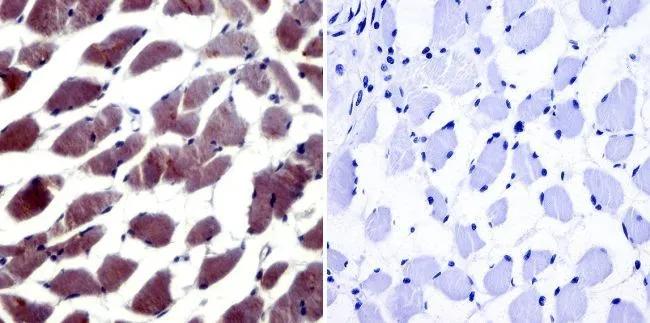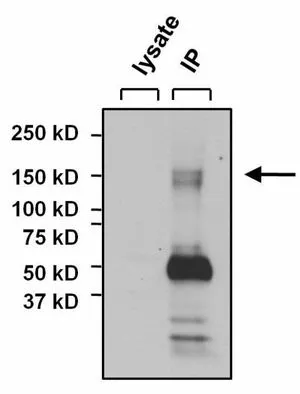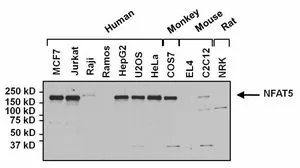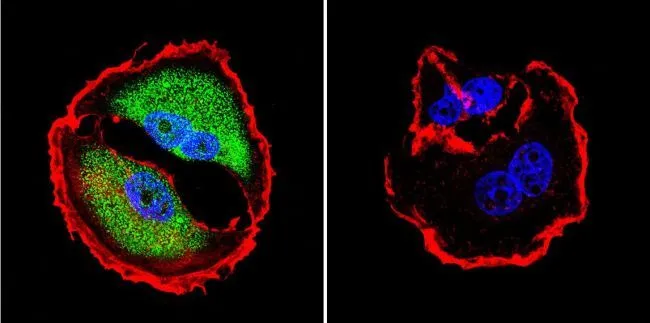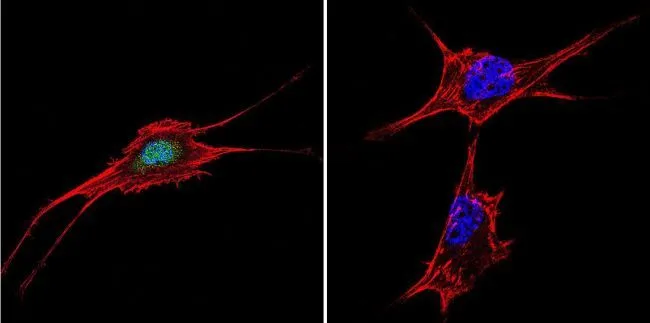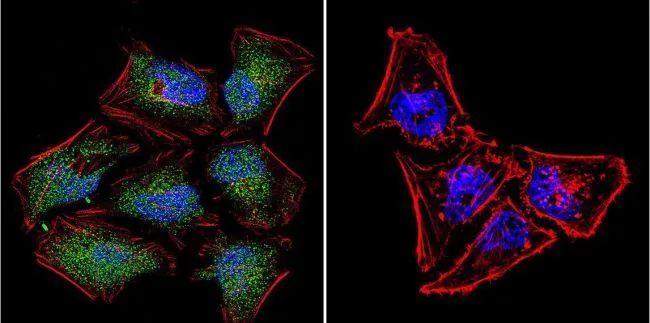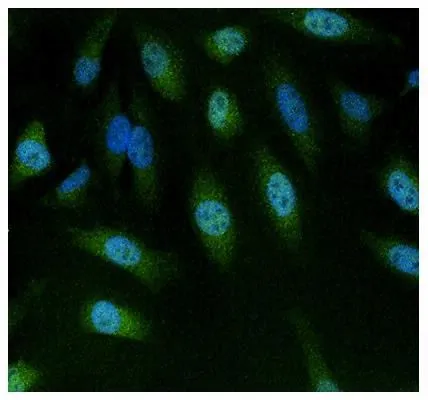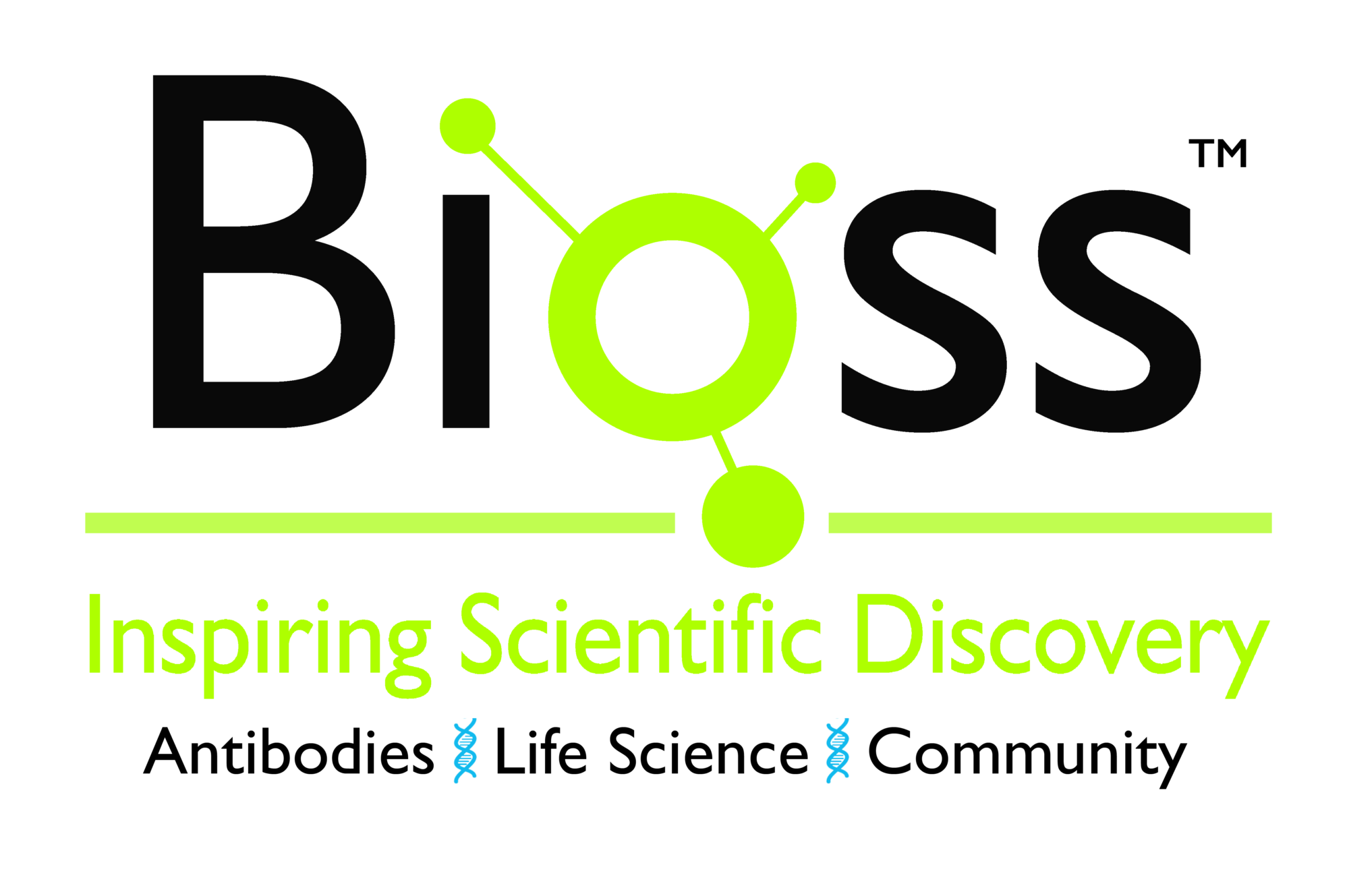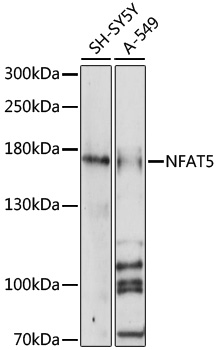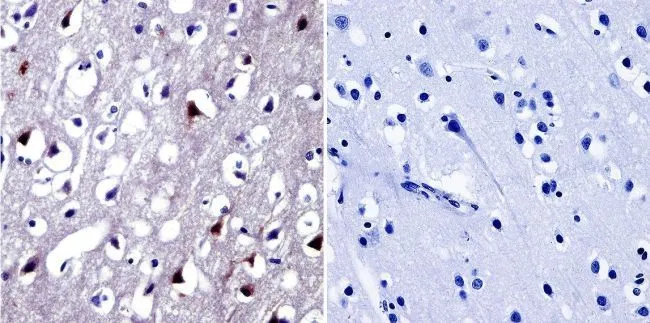
IHC-P analysis of human brain tissue using GTX23446 NFAT5 antibody. Left : Primary antibody Right : Negative control without primary antibody Antigen retrieval : heat induced antigen retrieval was performed using 10mM sodium citrate (pH6.0) buffer, microwaved for 8-15 minutes Dilution : 1:20
NFAT5 antibody
GTX23446
ApplicationsGel Shift Assay, ImmunoFluorescence, ImmunoPrecipitation, Western Blot, ChIP Chromatin ImmunoPrecipitation, ImmunoCytoChemistry, ImmunoHistoChemistry, ImmunoHistoChemistry Paraffin
Product group Antibodies
ReactivityHuman, Monkey, Mouse, Rabbit, Rat
TargetNFAT5
Overview
- SupplierGeneTex
- Product NameNFAT5 antibody
- Delivery Days Customer9
- Application Supplier NoteWB: 1:1,000. ICC/IF: 1:100-1:1000. IHC-P: 1:20. IP: 3 microg. *Optimal dilutions/concentrations should be determined by the researcher.Not tested in other applications.
- ApplicationsGel Shift Assay, ImmunoFluorescence, ImmunoPrecipitation, Western Blot, ChIP Chromatin ImmunoPrecipitation, ImmunoCytoChemistry, ImmunoHistoChemistry, ImmunoHistoChemistry Paraffin
- CertificationResearch Use Only
- ClonalityPolyclonal
- Concentration1 mg/ml
- ConjugateUnconjugated
- Gene ID10725
- Target nameNFAT5
- Target descriptionnuclear factor of activated T cells 5
- Target synonymsNF-AT5, NFATL1, NFATZ, OREBP, TONEBP, nuclear factor of activated T-cells 5, NFAT-like protein 1, T-cell transcription factor NFAT5, TonE-binding protein, glutamine rich protein H65, nuclear factor of activated T-cells 5, tonicity-responsive, osmotic response element-binding protein, tonicity-responsive enhancer-binding protein
- HostRabbit
- IsotypeIgG
- Protein IDO94916
- Protein NameNuclear factor of activated T-cells 5
- Scientific DescriptionThe product of this gene is a member of the nuclear factors of activated T cells family of transcription factors. Proteins belonging to this family play a central role in inducible gene transcription during the immune response. This protein regulates gene expression induced by osmotic stress in mammalian cells. Unlike monomeric members of this protein family, this protein exists as a homodimer and forms stable dimers with DNA elements. Multiple transcript variants encoding different isoforms have been found for this gene. [provided by RefSeq, Jul 2008]
- ReactivityHuman, Monkey, Mouse, Rabbit, Rat
- Storage Instruction-20°C or -80°C,2°C to 8°C
- UNSPSC12352203
References
- Master A, Huang W, Huang L, et al. An Improved Ocular Impression Cytology Method: Quantitative Cell Transfer to Microscope Slides Using a Novel Polymer. Curr Eye Res. 2022,47(1):41-50. doi: 10.1080/02713683.2021.1951300Read this paper

